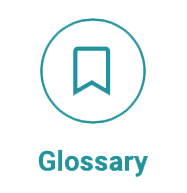灭菌或消毒后,复用医疗器械 (RMD) 可立即使用或存储直至使用。
存储条件取决于Spaulding分类原则下 RMD 的风险程度。
- 最终灭菌后,RMD 的包装保护其免受环境和操作过程污染。
- 非最终灭菌后,高度危险性 RMD 不受包装保护,不得存放。
- 消毒后,中度危险性 RMD 可在受控条件下暂时存储。 使用前存储的最长时间由当地法规规定(通常为 3 至 12 小时)。 如果超过时间限制,RMD必须重新处理。
在一些国家,中度危险性软式内窥镜的临时存放可以通过使用存放柜来延长。 最长存储时间由当地法规或指南规定。 阀门必须在干燥和无尘的条件下拆卸和单独存放。
|
- 低度危险性RMD 的存储按照医疗机构内部规定执行。
在消毒供应中心或使用现场存储。
- 存储区是一个专用于无菌物品的封闭空间。
在存储区外的拆箱区域将物品从外部运输容器中取出。 仅限于授权人员进入存储区域。 |
- 存储区域面积和存储设施是适应需要的。 在存储设施周围留有足够的空间,以允许空气流通,并避免包装物品与存储设施内表面可能形成的冷凝水接触。 距离地面留有足够的空间以便清洁(即至少 8 至 10 英寸,约 20 厘米)。 地面光滑、防水、完好且易于清洁。 与天花板和洒水喷头的距离由当地消防规范规定。 不可以将物品直接放在地面上,即使是暂时的。
- RMD 存放于灰尘、光线和湿度条件受控的环境中。
| 避免开放式的排放设施、供水设施、管线。 如果存在这样的情况,包括使用灭菌容器包装在内的所有无菌物品均不可以存放在水槽旁边或下方、与水接触的地方或下水管线的下方,或存放在任何可能被打湿的位置. 不要将无菌包材暴露在阳光直射下。 紫外线会加速包装材料老化。 避免温度和湿度的变化以防止水分(冷凝物)在器械表面积聚。 避免温度大幅度波动防止水分(冷凝物)积聚。 推荐的温度和相对湿度范围随当地指南而异(温度从 15°C 或 18°C到 25°C,RH大约 为60% 或在 40%到75% 之间)。 对于某些敏感的物品,制造商 IFU 可能需要指定湿度范围。 存储区域没有空气质量或气流污染限制的标准。参考当地指南。 |
- 根据环境,物品类型和包装材料选择存储系统,
| 避免开放式的排放设施、供水设施、管线。 如果存在这样的情况,包括使用灭菌容器包装在内的所有无菌物品均不可以存放在水槽旁边或下方、与水接触的地方或下水管线的下方,或存放在任何可能被打湿的位置. 不要将无菌包材暴露在阳光直射下。 紫外线会加速包装材料老化。 避免温度和湿度的变化以防止水分(冷凝物)在器械表面积聚。 避免温度大幅度波动防止水分(冷凝物)积聚。 推荐的温度和相对湿度范围随当地指南而异(温度从 15°C 或 18°C到 25°C,RH大约 为60% 或在 40%到75% 之间)。 对于某些敏感的物品,制造商 IFU 可能需要指定湿度范围。存储区域没有空气质量或气流污染限制的标准。参考当地指南。 |
- 定期执行和登记保洁措施。用于存储无菌物品的货架、推车和盒子保持井然有序、清洁干燥.
- 为了安全和便于搬运,重器械托盘存放在货架的中间高度。
- 存储按照先进先出原则进行安排以便RMD的周转。定期检查包装完整性和有效期。失效日期根据风险分析结果来规定。
| 无菌 RMD 的有效期是与事件相关的,取决于包装材料的质量、存储条件、运输方法和条件以及操作物品的次数和条件。损坏的可能性随着时间和操作次数的增加而增加。 |
存储和质量
根据质量管理原则制定书面的存储标准操作程序 (SOP)。
存储过程确认控制以下内容:
- 对所有允许在存储区域的工作员进行培训,并获得培训证书。
- 建立与处理重器械相关的职业健康和安全措施。
- 存储规则和存储区域清洁的标准操作程序 (SOP) 是最新的。
- 执行风险分析来确定失效日期。

WFHSS 对存储的建议
- 存储区专用于存放无菌物品。 仅限于授权和受过培训的人员进入。根据现场条件布置合适的存储空间和存储设施。存储条件(光照、温度、湿度)都在控制范围内。根据物品和包装特性建立存储注意事项。
- 存储流程按质量管理原则实施,并经过过程确认。
- 由存储现场条件的风险分析结果确定失效期。

Sterile in packaging or sterilized but not packaged or disinfected
Go to Storage – Key principles →
1 of 8 存储 - 立即使用Transfer under controlled conditions
Go to Storage – Key principles →
2 of 8 低度危险性物品的存放According to type of RMD and hospital policy
Go to Storage – Key principles →
3 of 8 度危险性 RMD 的存储Maximum storage times according to local regulation
Might be prolonged with flexible scopes storage cabinets
Go to Storage – Key principles →
4 of 8 无菌物品的存放In storage area under controlled conditions
Go to Storage of sterile items →
5 of 8 RMD 安全使用RMD safe for delivery to final users
Go to Storage – Key principles →
6 of 8According to SOP’s
Go to ![]() WFHSS recommendation for storage →
WFHSS recommendation for storage →
House keeping of storage area and control of expiration dates according to SOP’s
Go to Storage and quality →
8 of 8EN 16442 : 提供受控环境存放经处理的不耐热内窥镜的储存柜













